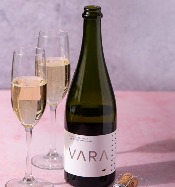
South African gin has steadily been growing in acclaim over the last few years, with brands such as Geometric Cape Dry, Unit 43 Original, and Bayab all achieving excellent results at the recent San Francisco and Singapore World Spirits Competitions.
As bars the world over start adding more of these spirits to their offerings, and gin connoisseurs follow suit with their collections at home, you might be wondering what the fuss is all about. Isn’t gin much the same, wherever it’s from?
Well, yes and no. The unifying characteristic of gin across the globe is that it must be flavoured with juniper berries – dark purple orbs that look a little like a cross between blueberries and peppercorns.
Technically, the juniper bush is a conifer, and so they’re not berries at all, but small, modified cones, which explains the piney and somewhat bitter flavour gin is famed for. As for the rest, distillers can choose from a variety of ways to incorporate juniper into their spirit, from the steep method (similar to how you’d make tea) to vapour infusion, where the spirit only makes contact while in vapour form, resulting in a much lighter style of gin.
They also have choices with the base spirit, which could be made from wheat, cane, grape, barley or whatever is readily available in the respective countries. Most significantly, however, other flowers, leaves, root, barks, fruits and berries (collectively called botanicals) can be added to the mix, and this is where South African gin shines.
As its name suggests, the country of South Africa is located at the tip of Africa, punctuated by a wild and rocky headland called Cape Point, aka the Cape of Good Hope – a milestone in early Portuguese maritime exploration. This beautiful area, and its coastal surrounds, is home to a fascinating array of indigenous plants, quite unlike anywhere else on the planet. So exotic and unique are they, in fact, that they fall under their own floristic designation, namely the Cape Floral Kingdom – one of just six such recognised geographical regions in the world.
While the Cape Floral Kingdom is the smallest of these, it’s the most diverse, boasting thousands of endemic evergreen shrub species, known collectively as fynbos (“fine bush”). Indeed, the area is so important, in terms of terrestrial biodiversity, that in 2004 it was named a World Heritage Site for having “outstanding universal value”. To top this, the wider country has a further wealth of flora, too, from marula trees to aloes.
Now, you can imagine what a resource such as that would mean for gin.




Says Jean-Baptiste Cristini, distiller of Geometric Gin: “Botanically, we obviously have an unmatched advantage. The fynbos floral kingdom gives us this unique aromatic foundation, which is impossible to emulate; hundreds of thousands of years of isolated floral evolution, thanks to a lack of cold eras and fairly insular geography.”
Jason Holtzhausen, who distils Unit 43 Gin along with his nephew, Bruno Ostoja, agrees: “Some South African gins are definitely up there with the best in the world. Our diverse and exclusive range of local botanicals play a big part in this, I think. The massive range of flavours and fragrances available in our exclusive fynbos areas definitely are a factor,” he affirms.
Cristini also suggests that the cultural diversity of the Rainbow Nation is one of its secret weapons, when it comes to its gins. “Historically, we have had so many different cultures infuse the Cape over the past four centuries, which has brought Indo-Chinese spices and European and Southern African flavours – all have their place in our colourful culture. 400 years isn’t much, which means that these varying cultures are still visible and palpable in our diverse Cape region,” he explains.
Cristini has chosen buchu and kapokbos (a native wild rosemary) for his Geometric Cape Dry Gin, both for the essential heritage they represent and the tropical versus vegetal aromatic profiles they have.
“I love buchu; it is irreverent and bold, yet layered and subtle. It is not only an exciting medicinal plant, but its aromatics go from herbal hempy to overripe pawpaw, passing through green mango and granadilla,” he expands. “Needless to say, it’s just so South African in its diversity of aromas and brightness.”
Interestingly, Holtzhausen also uses buchu and kapokbos, but with African wormwood, confetti bush and a species of salvia.
“We chose these for different reasons,” he expounds. “Flavour was definitely the first reason. Ease of growth and availability was also very important. We also wanted to use plants that we knew from childhood or from walking in the mountains. Species which we could relate to.”
“We grow all our own botanicals besides the buchu, which is grown for us on the mountain slopes near Franschhoek, as it is quite hard to grow in an urban environment,” he adds.
Chris Frederick and Damola Timeyin, who together co-own Bayab Gin, went in another direction. For their flagship Classic Dry, they use baobab in addition to the obligatory juniper. This is a deciduous fruit from the baobab tree – otherwise known as the tree of life, and rich in African mythology – that has a distinctive sweet, citrus flavour.
Like Geometric and Unit 43, though, Bayab has taken the world by storm. “Due to the pandemic, we have focused on the export market, where for many people, drinking South African spirits – made with botanicals that are sustainably sourced from across the continent – will be their first experience in tasting authentic African produce,” says Frederick.
Whatever your first South African gin is, with so many botanicals to feature, we doubt it will be your last.



